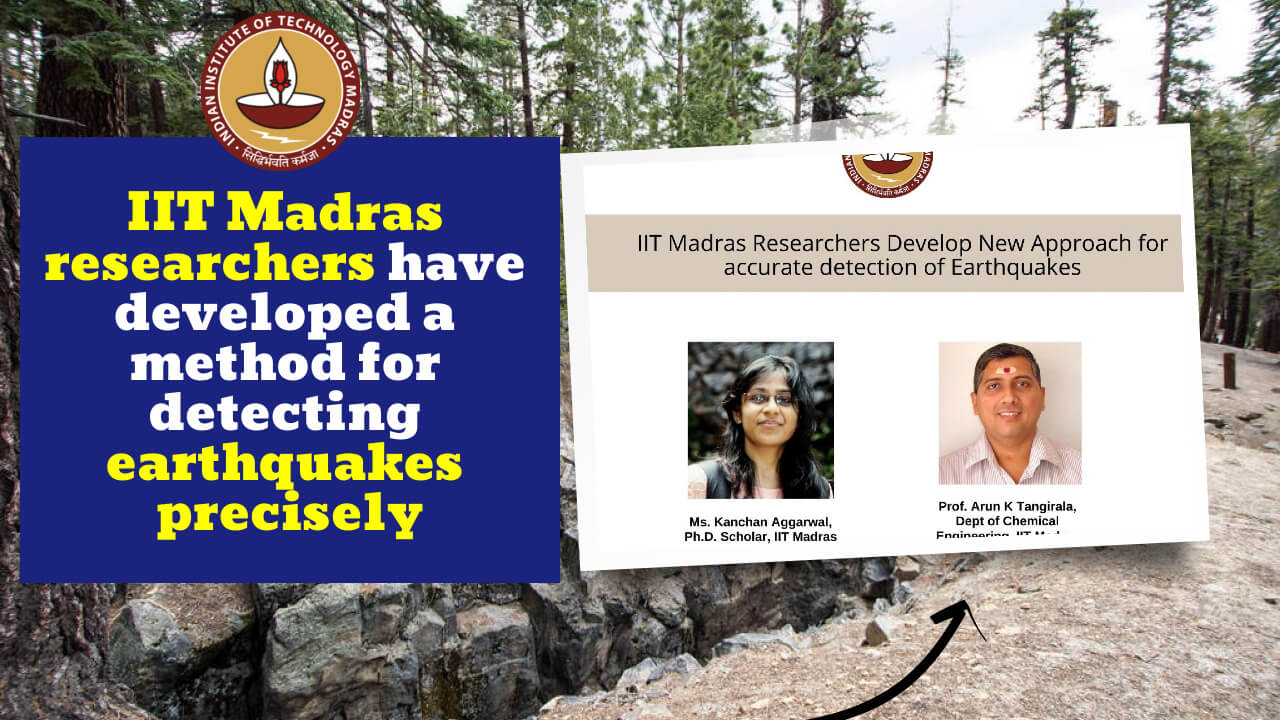Indian Institute of Technology Madras researchers have discovered a new way for accurately detecting and picking up the first waves in earthquake signals. When it comes to building an early warning system, this research could help us get a lead time of about 30 seconds to two minutes before the wave hits.
Key Highlight:
- Researchers at IIT Madras have devised a method for accurately detecting and picking out the earliest waves of earthquake signals.
- The method offers a modest lead time of 30 seconds to 2 minutes and allows for life-saving interventions.
- The system “can incorporate any prediction models, including machine learning and deep learning models, which will lessen the human intervention in detection.
Indian Institute of Technology Madras researchers have found another way to accurately identify and pick up the first waves in earthquake signals, which offers a tiny lead time and permits steps that can save lives. An Early Warning System that can give a lead time of 30 seconds to 2 minutes before the damaging surface waves hit can be developed through this research.
Arun Tangirala, Professor of Chemical Engineering, IIT Madras, supervised Ms. Kanchan Aggarwal’s research.
In what ways is the new method different from the old?
Outliers aren’t a problem thanks to a novel strategy that takes into account the noise’s properties.
By splitting lower and higher frequencies at each level, the research also offers a more flexible approach to frequency band selection, resulting in more precise detection and
A better signal-to-noise ratio (SNR) allows for more precise detection of the commencement of the P-wave using the new technique since it eliminates noise in undesirable time-frequency regions.
Aspects of the study that are useful
Researchers at IIT Madras have devised a method for accurately detecting and picking out the earliest waves of earthquake signals, resulting in a modest lead time of 30 seconds to 2 minutes and allowing for life-saving interventions.
In spite of a short lead time, nuclear reactors, transportation, and elevators in high-rise buildings can all be shut down, as well as many other actions that will save people’s lives.
“The suggested framework is not necessarily confined to the detection of seismic events but is generic and can be utilized for fault identification and isolation in other domains as well,” said Professor Arun K Tangirala, who led the research.
And he went on to say that the system “can incorporate any prediction models, including machine learning and deep learning models, which will lessen the human intervention in detection.”
@iitmadras researchers develop a new approach for accurate detection of earthquakes that can pick up the first waves to provide a small lead time of 30 seconds to 2 minutes to help enable measures to save countless lives.@DAEIndiahttps://t.co/qaNkB7sK1r pic.twitter.com/JNh3xt7fG0
— IIT Madras (@iitmadras) November 11, 2021





[…] Researchers at IIT Madras have developed a method to detect earthquakes… […]